While you should never adopt a dog solely for that dog to guard your home, getting a proficient watchdog can be an added benefit to adopting a pooch. However, not all dogs are good watchdogs. If you truly want a dog to guard your home, you need to get one of the best watchdog breeds.
What breeds fall into that category? Keep reading to find out.
1. Fox Terriers
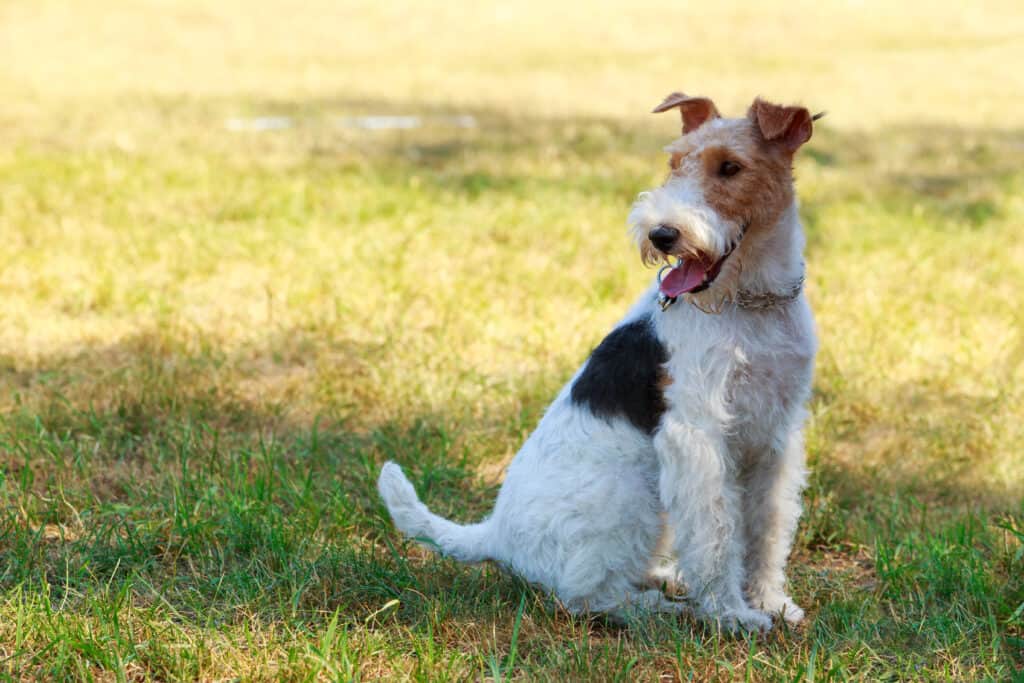
Due to their active and alert nature, all kinds of fox terriers can make good watchdogs.
©iStock.com/DevidDO
Fox terriers are one of the most impulsive and eager terriers. They’re untiring, playing and running around whenever they aren’t sleeping. Many dog owners note that they often form special bonds with their toys – that’s how often they play with them. While this unrelenting energy can be a lot to deal with, it can also make these dogs great watchdogs.
They’re too small to be guard dogs. However, if anything odd happens, these relentless dogs will tell you about it. They have keen hearing and great vision, allowing them to pick up on things others might miss.
These dogs are also very confident and fearless. They won’t back down from an intruder, even if they can’t do much about it. Their sheer tenacity can be inspiring.
While their energy makes them good watchdogs, we only recommend this breed for those with plenty of energy themselves. They require a lot of exercise and can easily be too much for calmer owners.
2. Greater Swiss Mountain Dogs

This breed is one of the larger dogs on this list, allowing them to also double as guard dogs in some situations.
©Dora Zett/Shutterstock.com
Swiss Mountain Dogs are exceptionally large and very different from the Fox Terrier we just discussed. However, they can also be very vigilant watchdogs and are known for their deep, intimidating bark. While they aren’t typically aggressive, their size and bark are often enough to ward off intruders.
That said, these dogs do vary a lot. Some are very friendly and love just about everyone. Others are more standoffish and may need extra socialization. You may even find a dog or two that is shy and easily spooked. Unlike many other purebred dogs, this breed isn’t known for their very sure temperament.
If you adopt one of these dogs, start obedience training by three months to prevent potential issues from occurring. Prioritize leash walking, as these dogs can easily pull their owners around.
3. Schipperkes
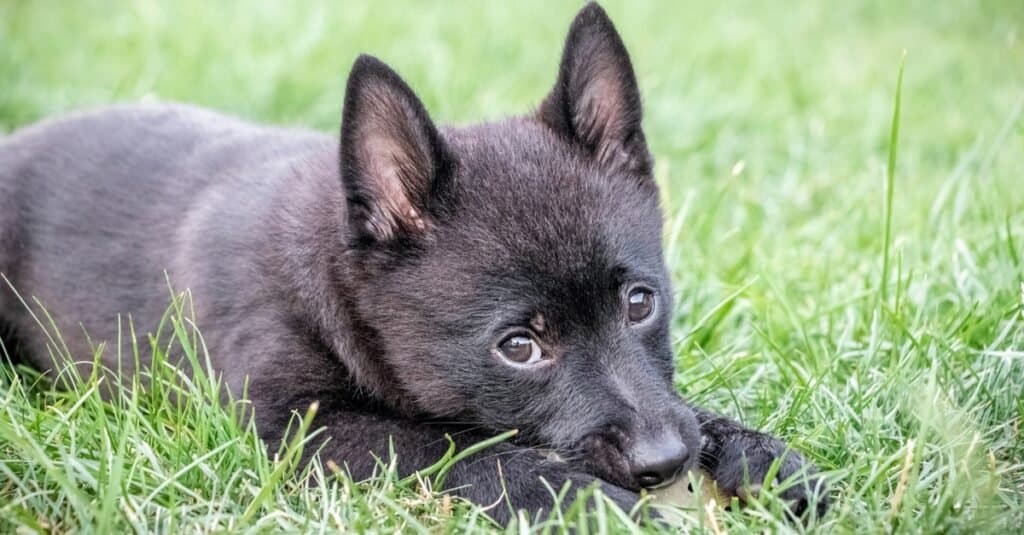
These small black dogs are some of the most active out there.
©Jaroslav Machacek/Shutterstock.com
Schipperkes almost never sit still. Similar to the Fox Terrier, they are always moving. While they are very friendly towards their owners, these dogs have an inherent suspicion of strangers. Therefore, they make very good watchdogs; they’ll always tell you when something is up!
This breed has a surprising problem-solving ability. However, they aren’t necessarily the most obedient. Care must be taken when containing your Schipperke, as they tend to chase anything that moves. Their instincts and extraordinary physical ability can easily send them over a fence.
Of course, as with all watchdogs, it’s important to consider whether the Schipperke will fit in your family. They’re very active, so they’re best for active families. They also need someone who can put up with their intensity.
4. Australian Terrier

These small dogs may look cute, but they are not lapdogs.
©slowmotiongli/iStock via Getty Images
Australian terriers are very sensible dogs. However, they are terreirs, through and through. They act very similar to other terriers, meaning they are courageous and alert. Of course, this also makes them fairly good watchdogs. They have sharp senses and are bred to notice changes in minute details (which is what makes them such good ratters). If they notice something strange, their insistent bark will let you know.
However, these dogs only do well for families that are home for much of the day. They need quite a bit of companionship, for one. They are also extremely active, so you’ll need to take them on regular walks.
Like most dogs on this list, their alert, active nature is what makes them a good watchdog. However, it can also make them harder for more laidback families to own.
5. Manchester Terriers

These athletic dogs may not be one of the most popular in the United States, but they can make great watchdogs.
©Melounix/Shutterstock.com
Manchester terriers come in two different sizes: standard and toy. Technically, these dogs are considered different breeds. However, they’re close enough in temperament that we’ve included them in the same category.
Both of these dogs are very lively and athletic. They need brisk walks or even all-out runs daily, as well as plenty of playtime. These dogs love to play, so they require a more active family.
Manchester terriers are quick to attach themselves to their owner. However, they are naturally wary of strangers. Therefore, they can make great watchdogs. In fact, these dogs are a bit prone to barking at strangers a bit too much. Early socialization is required to ensure that they can learn to co-exist with good strangers while still barking at the bad.
6. Staffordshire Bull Terriers
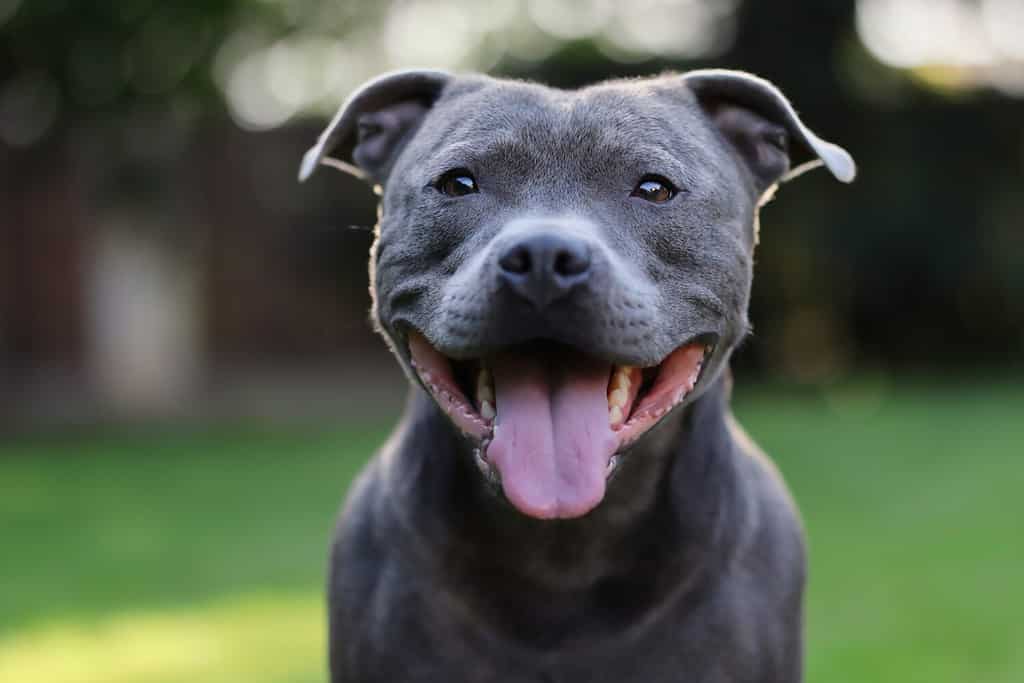
Despite some common misconceptions, these dogs are not “pitbulls”.
©Nikola Cedikova/Shutterstock.com
Staffordshire Bull Terriers are people-oriented dogs. They crave companionship and want to be with their owners as much as possible. However, with proper socialization, they can get along well with strangers. Their natural excitability does make them good watchdogs despite their friendly nature.
Even if they don’t see someone as a threat, they’ll let you know if there is a person outside.
That said, these dogs can be challenging in other ways. They tend to be somewhat aggressive towards other dogs, especially strange dogs that get in their space. They’re also very stubborn. Therefore, they do best with more confident, experienced dog owners. Staffordshire Bull Terriers also like to chew a lot.
Therefore, these dogs aren’t great for every family. You have to be willing to put up with some of their more challenging characteristics.
7. American Eskimo Dog
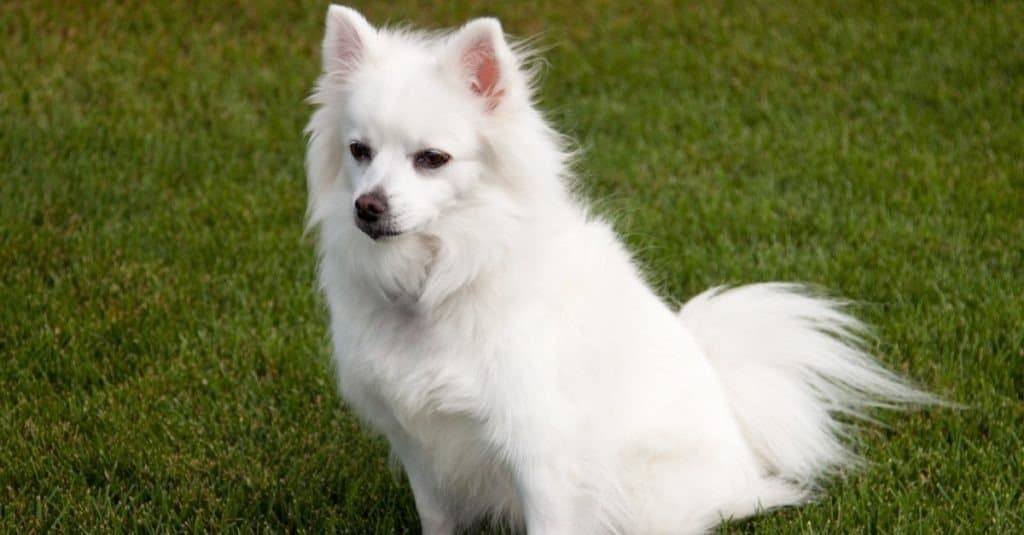
These fluffy, white dogs can make great companions, but their yappy nature also makes them pretty good watchdogs.
©Bikenbark/Shutterstock.com
American Eskimo Dogs are naturally very people-oriented. They crave attention and are very affectionate. They also look pretty exotic. Many people describe them as miniature Huskies.
These dogs are a bit weary of strangers, though they bond closely with their families. Their senses are also fine-tuned, allowing them to be serious watchdogs. However, they aren’t guard dogs in the least due to their temperament and smaller size. Early socialization is still highly recommended to bring this alert behavior down a notch or two.
Often, this breed is very smart and learns quickly. They excel at performing tricks and often bask in praise. However, they can be independent if you don’t start training early. They’re also very active dogs, so they require a more active family.
8. Rat Terriers
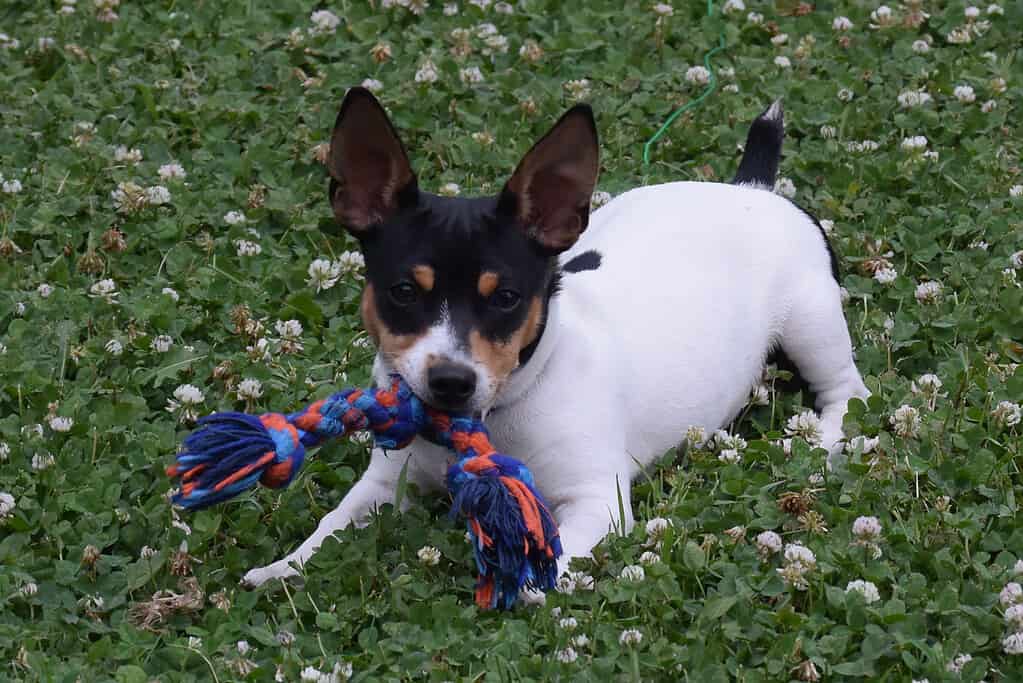
These terriers are incredibly small and active, making them great for more active families in smaller spaces
©Michele M Vogel/Shutterstock.com
Rat terriers are tenacious hunters. They’re exceptionally active and love chasing anything. As their name suggests, they’re natural ratters with a huge prey drive. They tend to chase just about anything that moves, and they can dispatch smaller creatures quickly.
Their activity and alert nature make them great watchdogs. They tend to be more vocal than other breeds. Not only do they bark, but they also “talk,” especially when trying to get your attention. We wouldn’t recommend a rat terrier to anyone looking for a quieter dog.
Rat terriers are notorious tunnelers. You’ll likely end up with a hole or two in your yard.
9. Spinone Italiano

Unlike most other watchdog breeds, the Spinone Italiano is more laid-back, especially as an adult.
©iStock.com/nemoris
This rarer breed is much different than the others we’ve mentioned. They’re much more low-speed when kept at home, though they can also be serious hunting dogs when trained. Younger puppies can be very active and often need several daily play sessions, but adults can be calm when their exercise needs are met.
Spinone Italianos require early exercise to get used to strangers. They’re naturally a bit cautious, which can make them great watchdogs. Their larger size and loud bark can also deter potential trespassers.
Of course, these dogs require plenty of exercise, so only active families need apply. They’re also shaggy, meaning that almost anything can cling to their coat and then be slung off.
The photo featured at the top of this post is © Lindsay VG/Shutterstock.com
Ready to discover the top 10 cutest dog breeds in the entire world?
How about the fastest dogs, the largest dogs and those that are -- quite frankly -- just the kindest dogs on the planet? Each day, AZ Animals sends out lists just like this to our thousands of email subscribers. And the best part? It's FREE. Join today by entering your email below.
Thank you for reading! Have some feedback for us? Contact the AZ Animals editorial team.






